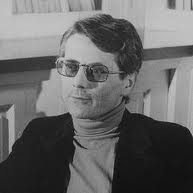Michel de Certeau
From Geography
Michel de Certeau was a French scholar whose work was influenced by lots of different disciplines like philosophy, history, psychoanalysis and the social sciences. De Certeau, who was greatly inspired by Sigmund Freud, was one of the founders of 'École Freudienne de Paris'. This informal group was meant for French scholars who were interested in psychoanalysis.
De Certeau's best-known work, especially in the United States, has been 'The Practice of Everyday Life'. In this book de Certeau studies the city and its inhabitants in order to understand the cultural practices of everyday life (Chalmers, n.d.). The central theme in the book is formed by the so-called 'everyday practices'. De Certeau subdivides these everyday practices into strategies and tactic. According to de Certeau, everyday life differs from daily life in that it is repetitive, unconscious and made of procedures. Daily life, on the other hand, is more conscious and defined by regularities. De Certeau argues that these procedures develop into everyday practices, namely strategies and tactics. He links the strategies with institutions and structures of power, which he calls 'the producers'. Tactics on the other hand, are linked with individuals, 'the consumers', who are acting in environments defined by strategies by the use of tactics. They can be seen as calculated actions determined by the absence of a certain power. In practice this means for example ‘taking advantage of opportunities of daily life’ (Leite, n.d.). This is also called bricolage.
In the chapter ‘Walking in the City’, de Certeau uses ‘the city’ as a practical example to explain the difference between strategies and tactics. In this, he describes the city as a concept which is generated by the strategies of many different institutional bodies, who produce things like maps that describe the city as a unified whole. According to de Certeau, this unified whole can only be seen when one looks down on the city from a very high building. In contrary, the individual at street level moves and acts in ways that are tactical and never fully determined by certain strategies of institutional bodies, for example by taking shortcuts. By this, de Certeau’s concept of everyday practice helps us to break social and physical boundaries that demarcate contemporary urban life (Leite, n.d.). Bird's eye view WTC
In what turned out to be the last work of de Certeau, Heterologies: Discourse on the other, he was allready sketching a future project which would have analysed heterological thinking in the early anthorpological discourse. Unfortunatly de Certeau passed away before he could finish his book and therefore its nowadays referred to as: "the book we would never read", but we can at least try to understand what he tried to argue on the heterology theme.
References:
Chalmers, L. (n.d.). Tactics of Work. Winnipeg: University of Manitoba, Department of Interior Design.
Leite, R.P. (n.d.). Personal Review: The Practice of Everyday Life by Michel de Certeau. São Cristovão: Federal University of Sergipe.
Published by Marijn Termorshuizen & Gert Gerritsen
Edited by EvelienKuypers
Edited by MichaelVoorbraak 13:36, 28 October 2011 (CEST)
Picture added by --AnneStrien 11:05, 26 October 2012 (CEST)
